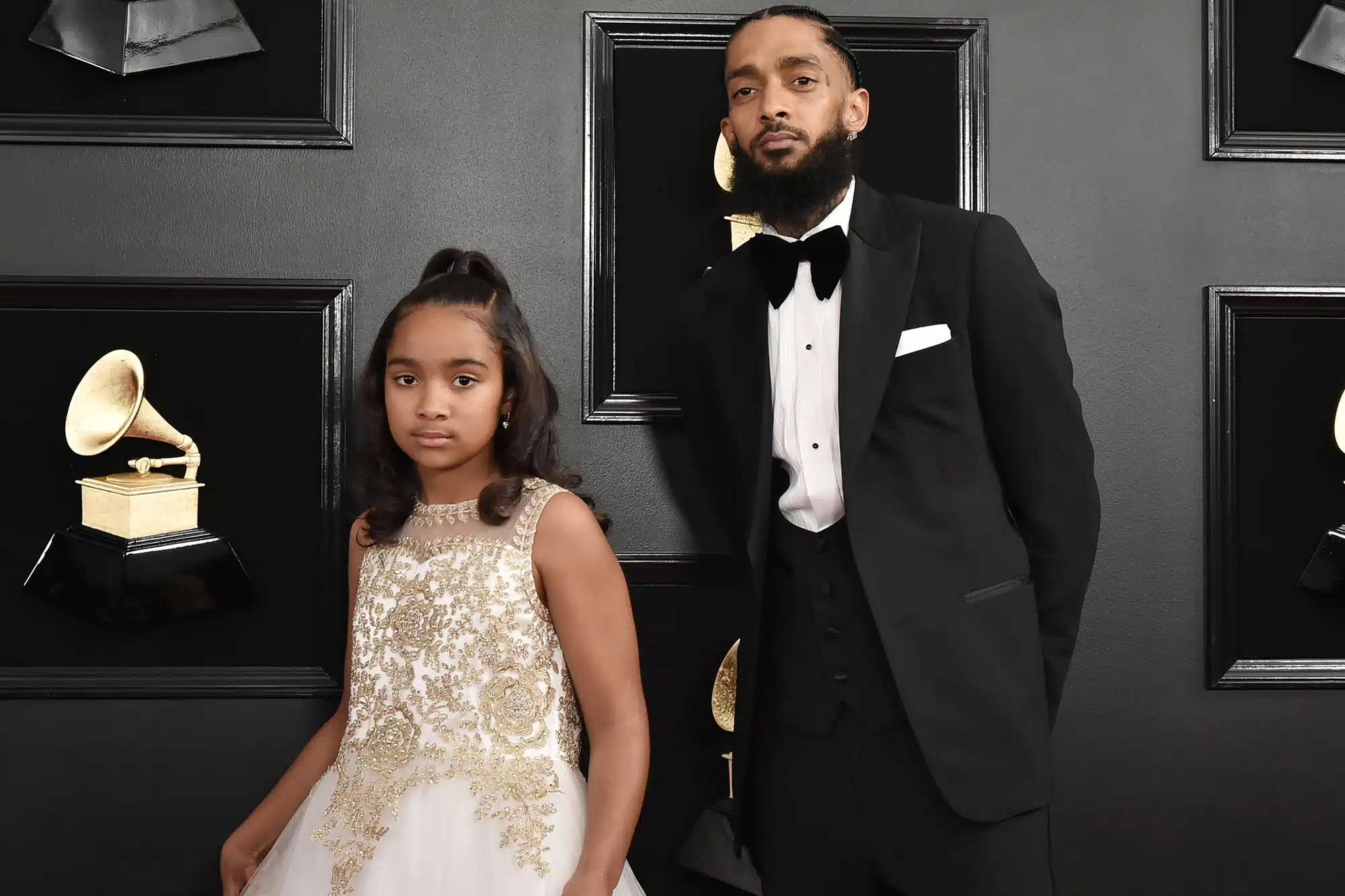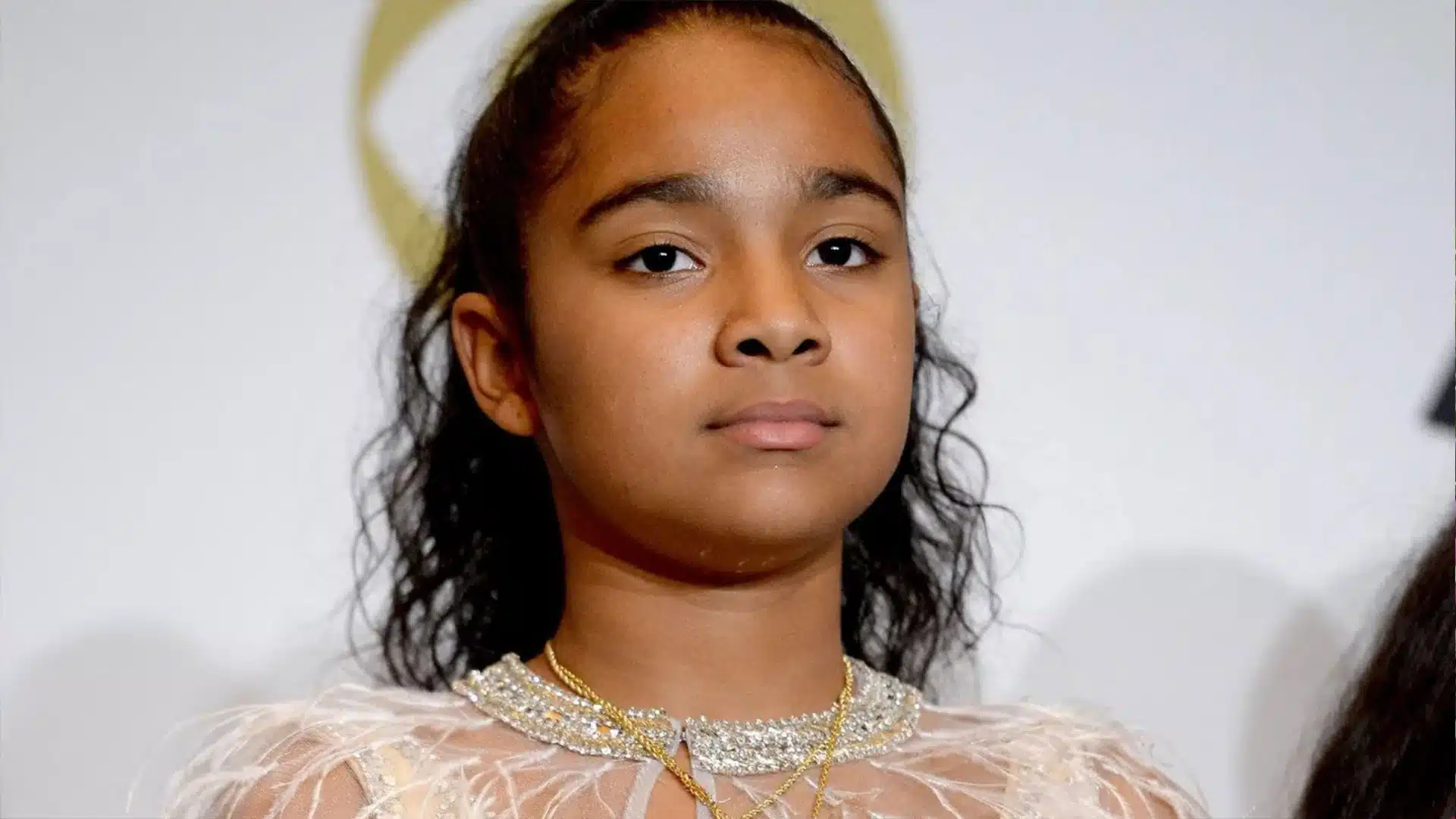Who is Emani Asghedom?
American celebrity child Emani Asghedom was born under the zodiac sign Scorpio on 9 November 2008 in California USA – some sources claim that she was born in 2011. Emani’s only known for being a daughter of the late American rapper, businessman and activist Ermias Joseph Asghedom aka Nipsey Hussle, who was shot and killed in front of his store in Los Angeles, California on 31 March 2019.

Early life and education
Emani’s being raised in Los Angeles by her legal guardians Samantha Smith, Angelique Smith and Samiel Asghedom, who are her father’s sister, mother and brother, respectively; her mother Tanisha Foster aka China Hussle doesn’t seem to be involved in her upbringing. Emani has a half-brother, Kross from her father’s relationship with American actress Lauren Nicole London; the boy was born in 2016 and is today being raised by Lauren.
Emani’s being kept away from media as her guardians want her to be able to lead a normal life. She’s been attending a local elementary school since 2023 and it’s believed that Emani’s mostly into dancing, as her guardians have enrolled her at school for the performing arts.
Age, height and net worth
Emani’s age is 15. She’s 4ft 10ins (1.52m) tall, weighs around 80lbs (35kgs) and has brown hair and eyes.
Emani’s father Nipsey’s net worth was estimated at over $8 million at the time of his death.
Who was her father Nipsey?
The late American rapper, activist and businessman Ermias Joseph Asghedom – aka Nipsey Hussle – was born as Airmiess Joseph Asghedom under the zodiac sign Leo on 15 August 1985 in Los Angeles. He released numerous mixtapes during his career, while he gained recognition with the release of “Slauson Boy Volume 1” in 2010; this led to Nipsey signing a contract with Epic Records and Cinematic Music Group, and thus launching his career in the rap genre.
— THA GREAT (@NipseyHussle) April 8, 2018
Nipsey was raised alongside his brother Samiel and sister Samantha in South Central Los Angeles, by their Eritrean war refugee father Dawit Asghedom who fled to the US during the Eritrean War of Independence, and African-American mother Angelique Smith (nee Boutte); Nipsey’s brother’s followed in his footsteps and is today a rapper known as Blacc Sam.
Nipsey studied at Alexander Hamilton High School but dropped out before matriculating; he was 14 when he left home and joined the street gang Rollin’ 60s Neighborhood Crips, and 17 when he joined the hip hop movement Digital Guerrilla – they went on to release their mixtapes “BV Boys Sampler, Beats & Babes” and “Shades of Butter”. He chose ‘Nipsey’ as his professional name as it was his nickname while he was growing up, after the late American actor, comedian and poet Julius ‘Nipsey’ Russell. The rapper was 19 when his father took him and his brother to Eritrea, where they spent three months the trip inspired Nipsey to become a community activist.
Nipsey’s journey in the music industry began in the mid-2000s when he released a series of mixtapes that gained local recognition; his distinctive style, characterized by a blend of West Coast influences set him apart from the crowd. It was the above-mentioned 2010 mixtape “Slauson Boy Volume 1” that marked a turning point, garnering attention beyond his local fan base.
In 2011, Nipsey independently released his first studio album “South Central State of Mind”, which showcased his storytelling ability and provided a glimpse into the realities of life in South Los Angeles. Despite being released without major label support, the project received positive reviews, and laid the foundation for Nipsey’s future success.
One of his defining characteristics was his commitment to independence and ownership; in 2013, Nipsey made headlines by releasing his eighth mixtape “Crenshaw” using an innovative business model. He offered 1,000 copies of the mixtape for $100 each, embracing a direct-to-consumer approach, which not only generated significant revenue, but also attracted attention from rap mogul Jay-Z, who purchased 100 copies to express his support.
The success of “Crenshaw” paved the way for Nipsey to release his next project, “Mailbox Money” in a similar fashion in 2014; his strategic thinking and emphasis on ownership made him a star in an industry, in which artists often struggled to retain control over their work.
In 2018, Nipsey reached a career pinnacle with the release of his highly acclaimed album “Victory Lap”; it featured collaborations with artists such as Kendrick Lamar and YG, and earned Nipsey a Grammy nomination for Best Rap Album. The project showcased Nipsey’s growth as both an artist and individual, and it became his most popular work.
Besides having been a successful rapper, Nipsey was also a visionary entrepreneur; he invested in his community, particularly in the Crenshaw district of Los Angeles where he grew up. Nipsey’s business ventures included The Marathon Clothing store, which he co-owned, and a STEM center for young people interested in science, technology, engineering and mathematics; his efforts aimed to create opportunities for success and empowerment in the same neighborhood that faced economic challenges and systemic issues.
Tragically, Nipsey’s life was cut short on 31 March 2019 when he was shot and killed outside The Marathon Clothing store. The news sent shockwaves through the music industry and beyond, as fans mourned the loss of not just a talented artist, but also a community leader and advocate for change. Eric Ronald Holder Jr. was subsequently sentenced to 60 years in jail.
Nipsey’s impact extended beyond his music and business ventures; his commitment to social activism and community development earned him respect as a genuine force for positive change. He had envisioned a future where individuals could rise above their circumstances through hard work, education and community support.
In the wake of his passing, Nipsey’s legacy continues to inspire. His influence can be seen in the outpouring of support from fellow artists, fans and community members who strive to carry on his message of empowerment and self-determination. His store The Marathon continues to work, not just as a brand but as a symbol of resilience and the pursuit of excellence.










Leave a Comment